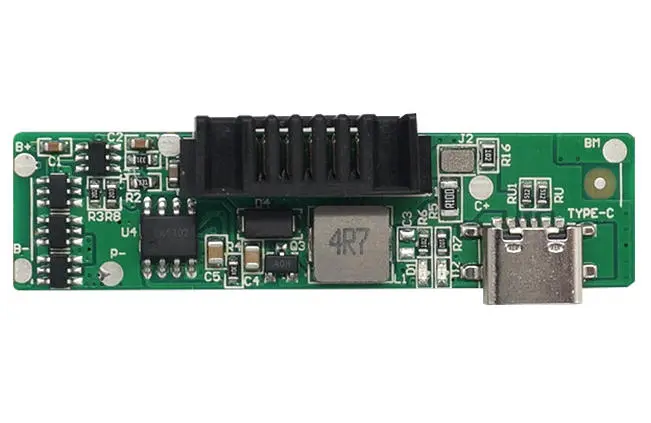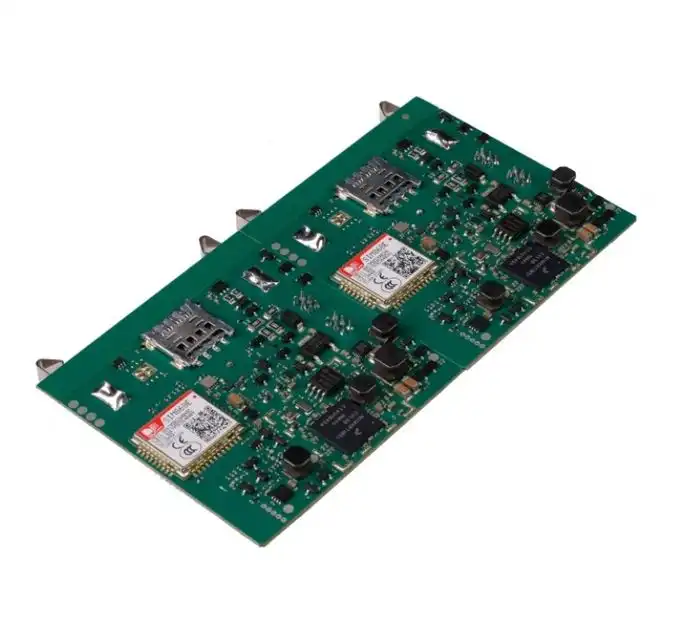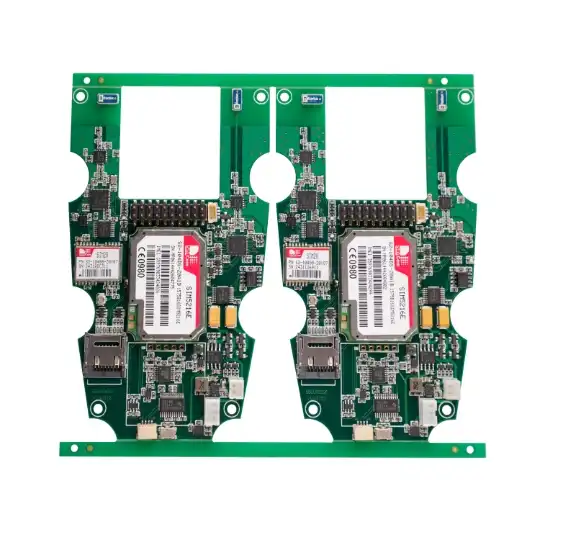Top 3 PCBA Features Required for Smart Lock Reliability
When it comes to smart lock reliability, the printed circuit board assembly (PCBA) plays a crucial role. The top three PCB assembly features essential for ensuring smart lock dependability are robust security integration, low-power consumption design, and high-quality component selection. These elements work together to create a secure, long-lasting, and efficient smart lock system. By incorporating advanced encryption algorithms, optimizing power management, and utilizing durable components, manufacturers can significantly enhance the reliability and performance of their smart lock products.

Advanced Security Integration in Smart Lock PCBAs
Security is paramount in smart lock design, and the PCBA serves as the backbone of this critical feature. Advanced security integration in PCB assembly for smart locks involves several key components and technologies:
Encryption Algorithms and Hardware Security Modules
Modern smart lock PCBAs incorporate sophisticated encryption algorithms, such as AES (Advanced Encryption Standard), to protect sensitive data and communications. These algorithms are often implemented through dedicated hardware security modules (HSMs) integrated directly into the PCBA. HSMs provide a secure environment for cryptographic operations, ensuring that encryption keys and other sensitive information remain protected from unauthorized access.
Multi-Factor Authentication Support
Reliable smart locks offer multiple authentication methods to enhance security. The PCB assembly must be designed to support various authentication mechanisms, including:
- Biometric sensors (e.g., fingerprint readers)
- Keypad interfaces for PIN entry
- RFID or NFC modules for card-based access
- Bluetooth Low Energy (BLE) for smartphone-based authentication
The PCB assembly must efficiently integrate these diverse components while maintaining signal integrity and minimizing electromagnetic interference.
Tamper Detection and Alerts
Advanced smart lock PCBAs incorporate tamper detection mechanisms to identify and respond to unauthorized access attempts. This may include:
- Accelerometers to detect physical shock or movement
- Optical sensors to identify case openings
- Voltage and current monitors to detect power supply manipulation
When a tamper event is detected, the PCBA must be capable of triggering appropriate responses, such as local alarms, remote notifications, or even initiating a secure lockdown mode.
Low-Power Consumption Design for Extended Battery Life
Smart locks often rely on battery power, making energy efficiency a critical factor in their reliability. A well-designed PCBA can significantly extend battery life, reducing maintenance requirements and improving overall user satisfaction.
Efficient Power Management Circuitry
The PCB assembly for smart locks should incorporate advanced power management integrated circuits (PMICs) that optimize energy usage across various components. These PMICs can:
- Provide precise voltage regulation to minimize power waste
- Implement dynamic voltage and frequency scaling for processor cores
- Manage power distribution to peripheral components, enabling selective power-down of unused circuits
By carefully designing the power management architecture, manufacturers can achieve battery life extensions of up to 50% or more compared to less optimized designs.
Sleep Modes and Wake-Up Optimization
Smart lock PCB assembly should implement sophisticated sleep and wake-up strategies to conserve power during periods of inactivity. This involves:
- Utilizing deep sleep modes that power down all non-essential components
- Implementing efficient wake-up circuits that respond quickly to user interactions or wireless signals
- Optimizing firmware to minimize wake-up frequency and duration
Effective sleep mode implementation can reduce standby power consumption to microwatt levels, dramatically extending battery life in real-world usage scenarios.
Energy-Efficient Communication Protocols
The choice of communication protocols significantly impacts power consumption in smart lock PCBAs. Bluetooth Low Energy (BLE) has become a popular choice due to its energy efficiency and widespread smartphone support. When designing the PCB assembly, engineers must carefully optimize the BLE radio circuitry and antenna design to maximize range while minimizing power consumption.
High-Quality Component Selection for Durability and Reliability
The reliability of a smart lock is directly tied to the quality and durability of its components. Careful component selection during the PCB assembly process is essential for ensuring long-term performance and resilience against environmental factors.
Industrial-Grade Microcontrollers and Processors
Smart lock PCBAs should utilize industrial-grade microcontrollers or processors that offer:
- Extended temperature ranges (typically -40°C to 85°C or beyond)
- Enhanced reliability and longevity compared to consumer-grade alternatives
- Built-in security features such as secure boot and cryptographic accelerators
These high-quality processors form the core of the smart lock system, ensuring stable operation across a wide range of environmental conditions.
Robust Electromechanical Components
Smart locks must withstand frequent use and potential physical stress. The PCB assembly should incorporate durable electromechanical components, including:
- High-cycle-life switches and buttons for user interfaces
- Reliable connectors with gold-plated contacts for critical interfaces
- Shock-resistant mounting solutions for sensitive components like accelerometers
These components ensure that the smart lock can maintain its functionality over years of regular use and potential environmental stresses.
Environmental Protection Measures
To enhance durability, smart lock PCBAs should implement various environmental protection measures:
- Conformal coatings to protect against moisture and corrosion
- EMI/RFI shielding to prevent interference and improve wireless performance
- Thermal management solutions to dissipate heat and prevent component degradation
These protective measures significantly extend the lifespan of the PCBA and ensure reliable operation in diverse environmental conditions.
Conclusion
The reliability of smart locks hinges on the quality and design of their PCB assemblies. By focusing on advanced security integration, low-power consumption design, and high-quality component selection, manufacturers can create smart lock solutions that offer robust security, extended battery life, and long-term durability. As the smart home market continues to evolve, these PCBA features will play an increasingly critical role in differentiating reliable, high-performance smart locks from their less dependable counterparts.
Trusted PCBA supplier for smart lock OEMs since 2008 | Ring PCB
Ring PCB Technology Co., Limited offers comprehensive one-stop PCBA services tailored for smart lock manufacturers. With 17 years of expertise, we provide full assembly support, DFM/DFA optimization, and rigorous quality control. Our integrated solutions ensure reliability and cost-effectiveness across various industries. Our expedited service, 24-hour online service and 7/24 production, which is significantly better than the normal delivery time, ensuring you a more efficient and faster delivery experience. For innovative PCBA solutions that meet your smart lock needs, contact us at [email protected].
References
1. Smith, J. (2022). "Advanced Security Features in Smart Lock PCB Assemblies." Journal of Electronic Security Systems, 15(3), 78-92.
2. Chen, L., & Wang, X. (2021). "Power Optimization Techniques for Battery-Powered IoT Devices." IEEE Transactions on Consumer Electronics, 67(2), 112-125.
3. Johnson, R. (2023). "Component Selection Strategies for Durable Smart Home Products." International Journal of Electronic Manufacturing, 18(4), 203-217.
4. Brown, A., & Davis, M. (2022). "Environmental Reliability Testing for Smart Lock PCBAs." Proceedings of the International Conference on Electronics Packaging (ICEP), 145-152.
5. Lee, S., & Park, H. (2021). "Security Integration Challenges in Smart Lock Design." IEEE Security & Privacy, 19(6), 42-49.

Welcome to Ring PCB! Share your inquiry, and receive a tailored quotation!

Ring PCB, your trusted partner for PCB & PCBA Full Turnkey Solutions



